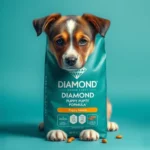
Introduction
Proper nutrition is vital for maintaining your dog’s health and well-being. Just like humans, dogs require a balanced diet that includes essential nutrients to thrive. As dog owners, it’s important to understand what goes into our pets’ food, including ingredients that may seem unfamiliar, such as powdered cellulose. This article aims to shed light on the significance of dog nutrition, the role of various ingredients, and specifically, the implications of powdered cellulose in dog food.
Understanding Dog Nutrition
Essential Nutrients for Dogs
Dogs, like other living beings, need a combination of nutrients to support their overall health. The essential nutrients include:
- Proteins: Crucial for growth, maintenance, and repair of tissues. Proteins are made up of amino acids, some of which are essential for dogs.
- Fats: Provide energy, support cell structure, and help absorb certain vitamins. Healthy fats are vital for skin and coat health.
- Carbohydrates: While not essential, carbohydrates provide a quick source of energy and can be a valuable component of a balanced diet.
- Vitamins and Minerals: These are required in small amounts for various biochemical processes, including immune function, bone health, and metabolic processes.
The Role of Ingredients in Dog Food
When selecting dog food, it’s essential to differentiate between whole foods and fillers. Whole foods, such as meat, vegetables, and grains, provide essential nutrients, while fillers often add bulk without nutritional value. Additionally, understanding the difference between natural and synthetic ingredients can help dog owners make informed decisions about their pet’s diet.
What is Powdered Cellulose?
Definition and Origin
Powdered cellulose is a plant-based ingredient derived from the cell walls of plants. It is primarily composed of cellulose, a type of fiber that is indigestible in dogs but serves various functional purposes in dog food. It is obtained from a variety of plant sources, including wood pulp, cotton, and other plant fibers.
How Powdered Cellulose is Made
The manufacturing process of powdered cellulose involves extracting cellulose fibers from plant materials, followed by grinding them into a fine powder. This process ensures that the final product is safe for consumption and maintains its functional properties. The quality of powdered cellulose can vary based on the source and processing methods, making it crucial for pet food manufacturers to adhere to safety standards.
The Role of Powdered Cellulose in Dog Food
Functions and Benefits
Powdered cellulose serves several functions in dog food, including:
- Acts as a Source of Fiber: Fiber is essential for maintaining healthy digestion. Powdered cellulose can help regulate bowel movements and promote gut health.
- Helps in Weight Management: As a low-calorie filler, it adds bulk to the diet, helping dogs feel full without excessive calories.
- Aids in Digestion and Gut Health: By promoting regularity, fiber from powdered cellulose can help prevent issues like constipation, contributing to overall digestive health.
How it Affects Dog’s Diet
When comparing powdered cellulose to other fiber sources like beet pulp or psyllium, it’s important to consider the balance of fiber intake with other nutrients. While it can be a beneficial addition, it should not replace higher-quality fiber sources that provide additional nutrients.
Pros and Cons of Powdered Cellulose in Dog Food
Advantages
- Low-Calorie Filler: Powdered cellulose is an excellent option for weight management because it fills dogs up without adding significant calories.
- Non-Allergenic and Safe for Most Dogs: Most dogs tolerate powdered cellulose well, making it a safe choice for pet food manufacturers.
Disadvantages
- Lack of Nutritional Value: While it provides fiber, powdered cellulose does not offer significant nutritional benefits, which can be a drawback for some dog owners seeking high-quality diets.
- Potential Digestive Issues: In some cases, dogs may experience digestive upset if they consume too much fiber from powdered cellulose, particularly if they are not used to high-fiber diets.
When to Avoid Powdered Cellulose
Certain health conditions, such as gastrointestinal disorders, may require avoiding powdered cellulose. Additionally, dogs with allergies or sensitivities should be monitored closely when consuming foods containing this ingredient.
Evaluating Dog Food Ingredients
Reading Dog Food Labels
Understanding dog food labels is crucial to making informed choices. Look for ingredient lists that prioritize high-quality proteins and whole foods over fillers and by-products.
Recognizing Red Flags
Being aware of common fillers, like powdered cellulose, and their implications can help you avoid misleading marketing terms. Terms like “grain-free” or “natural” can sometimes mask less desirable ingredients.
Alternatives to Powdered Cellulose
Natural Fiber Sources
If you’re considering alternatives to powdered cellulose, there are many natural fiber sources that can be beneficial:
- Pumpkin: Rich in fiber and nutrients, it’s great for digestion.
- Sweet Potatoes: A nutritious source of fiber and vitamins.
- Green Peas: Provide fiber along with protein and vitamins.
Choosing the Right Dog Food
Selecting the right dog food requires assessing your dog’s specific nutritional needs. Consult with a veterinarian to ensure you choose a diet that meets your dog’s unique health requirements.
Conclusion
Understanding dog nutrition is crucial for promoting your furry friend’s health and longevity. Ingredients like powdered cellulose play a role in many pet foods, offering benefits such as fiber content and weight management. However, it’s essential to consider both the advantages and disadvantages of this ingredient in the context of your dog’s overall diet. Making informed choices about dog food can significantly impact your pet’s health and well-being.
FAQs
What is powdered cellulose in dog food?
Powdered cellulose is a plant-based ingredient used in dog food primarily as a source of fiber and a low-calorie filler.
Is powdered cellulose safe for dogs?
Yes, powdered cellulose is generally safe for most dogs and is non-allergenic. However, individual sensitivities may occur, and it should be monitored accordingly.
Are there any nutritional benefits to powdered cellulose?
While powdered cellulose provides fiber, it lacks significant nutritional value compared to whole food sources.
Can powdered cellulose cause digestive issues in dogs?
In some cases, excessive intake of fiber from powdered cellulose may lead to digestive upset. It’s important to maintain a balanced diet.
How can I evaluate the quality of dog food?
Look for high-quality ingredients, understand the ingredient list, and consult with a veterinarian to ensure the food meets your dog’s nutritional needs.









